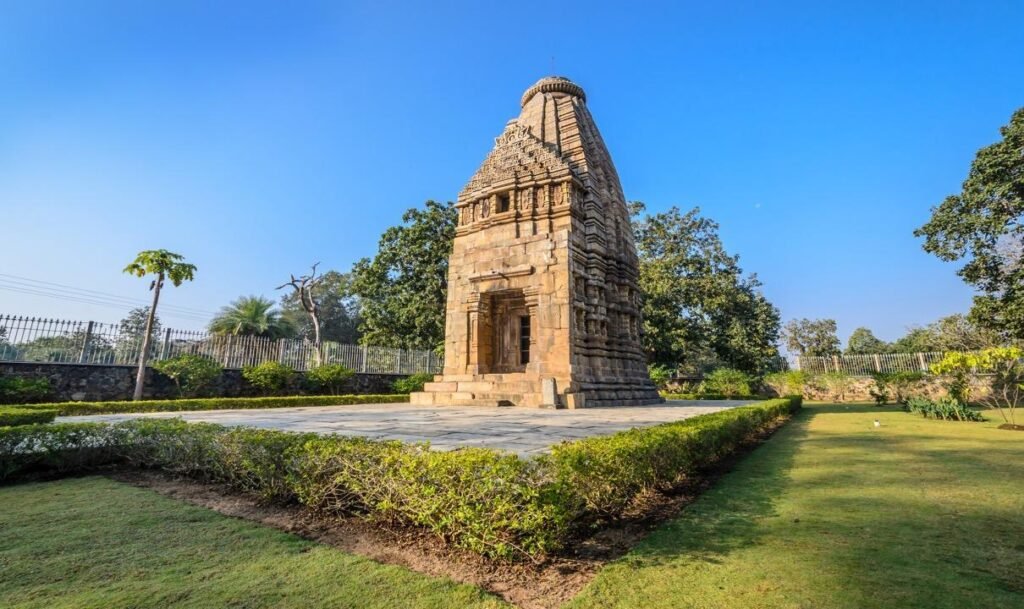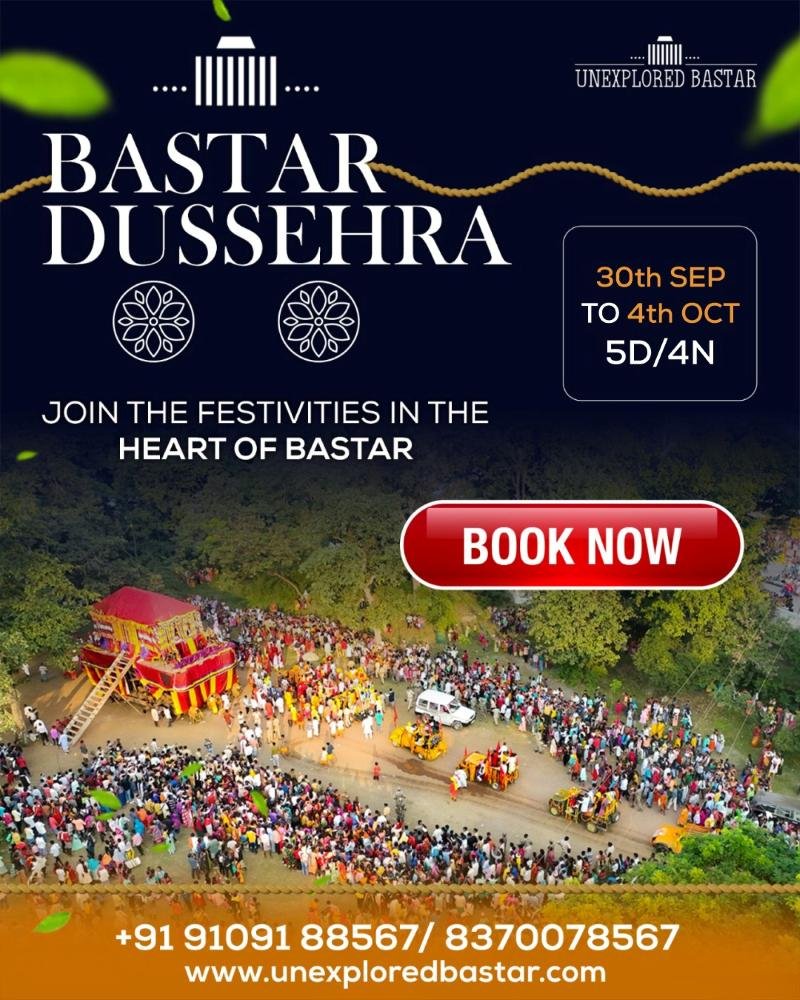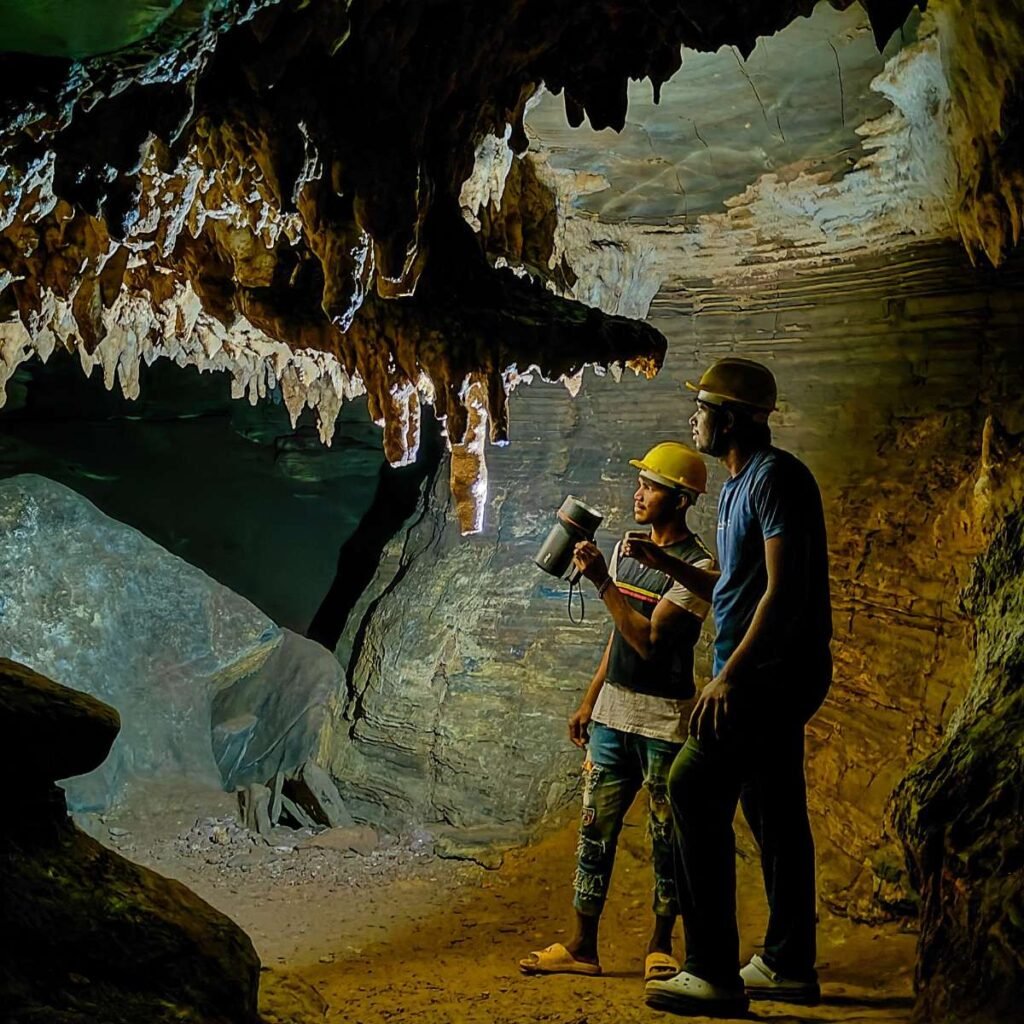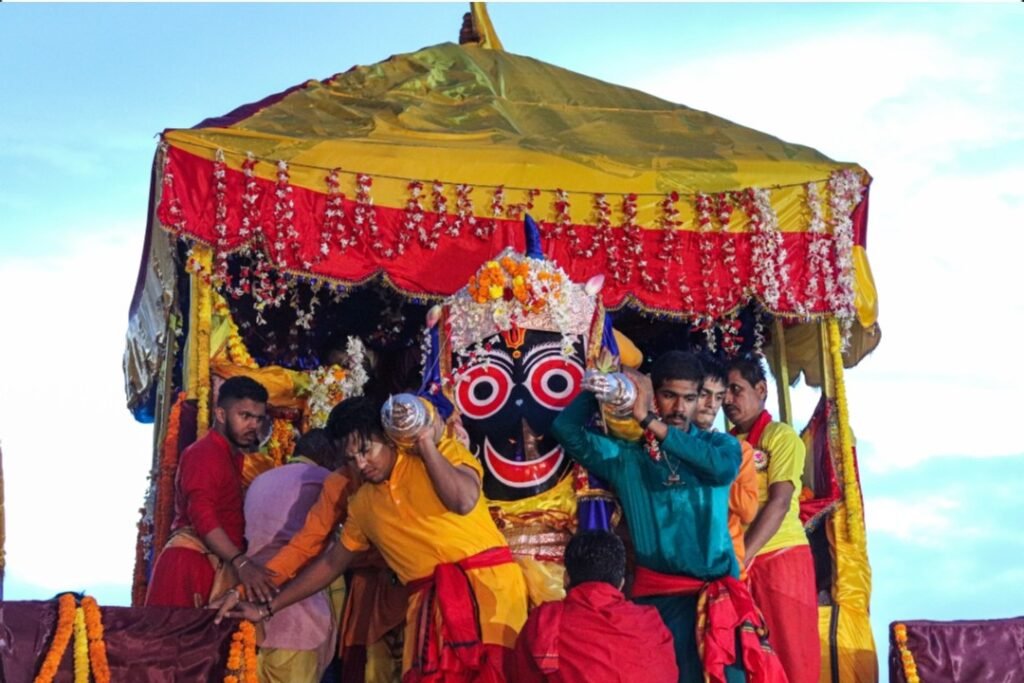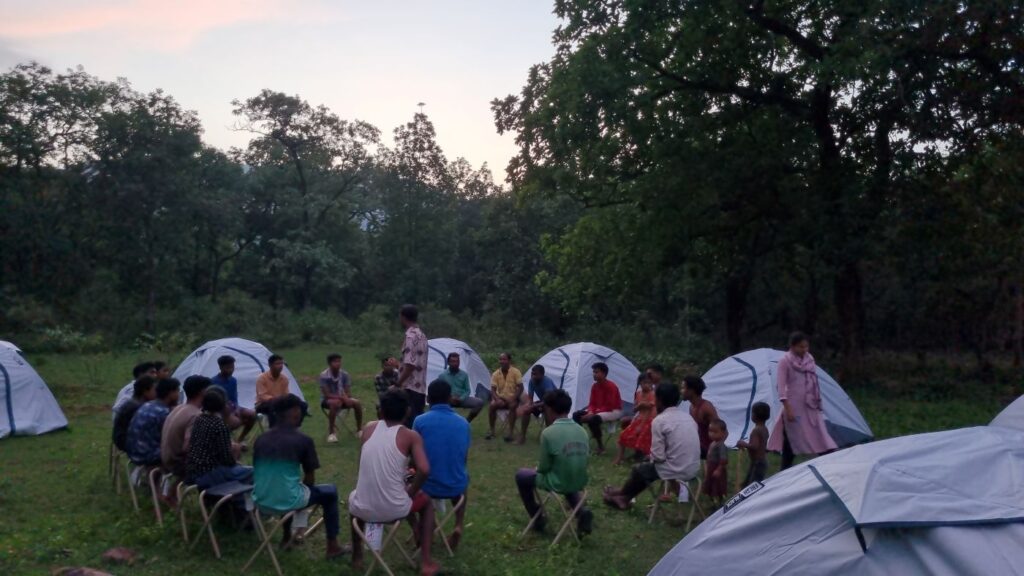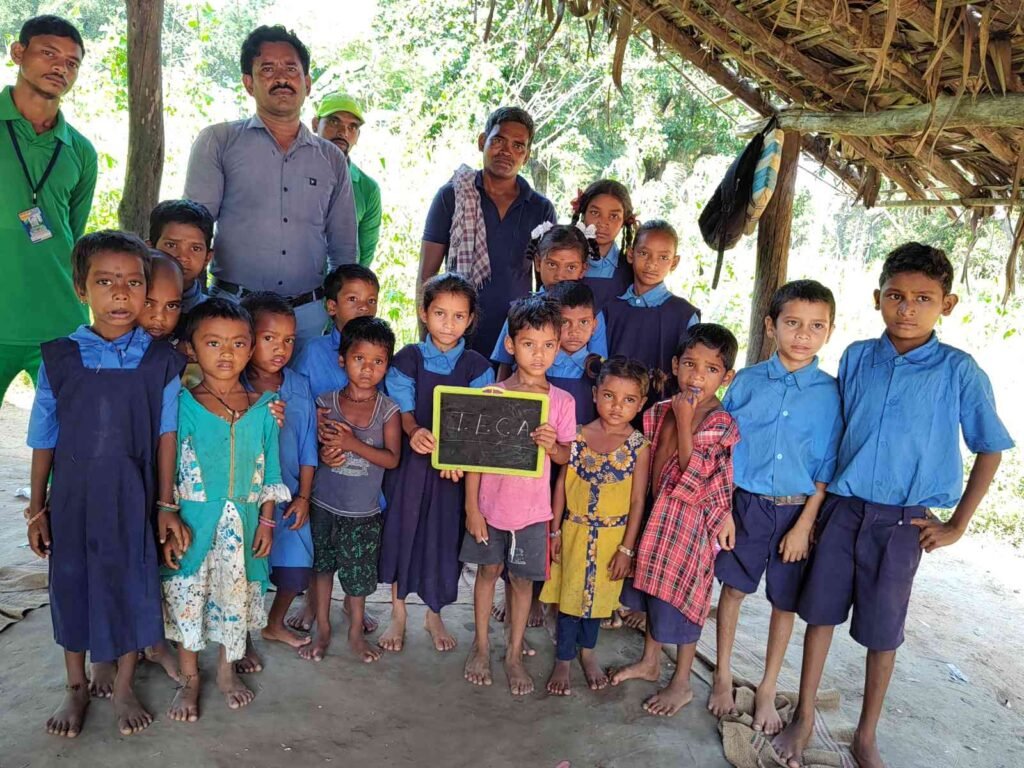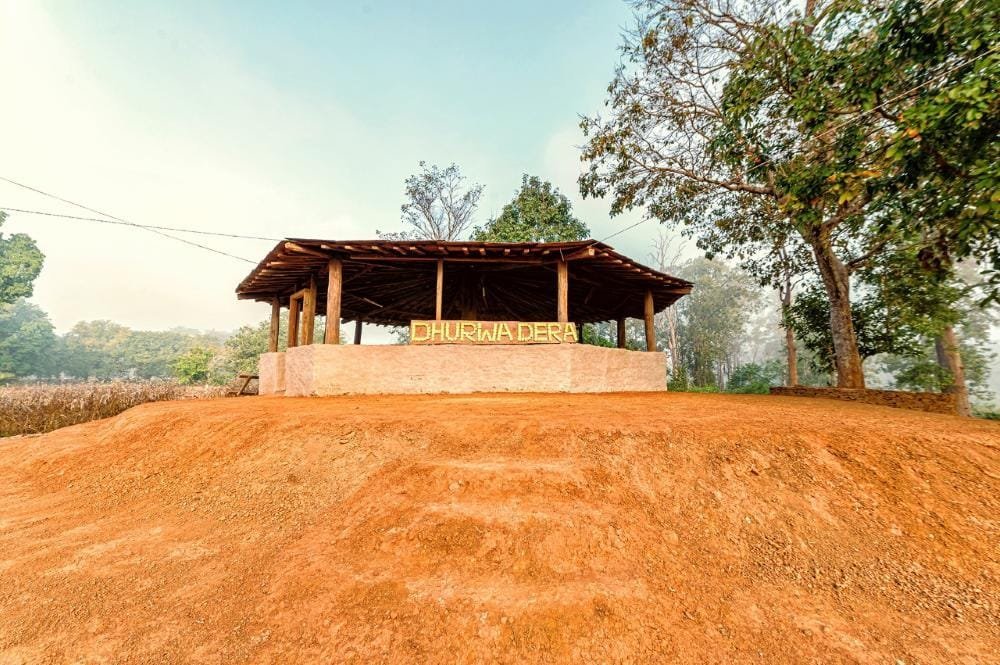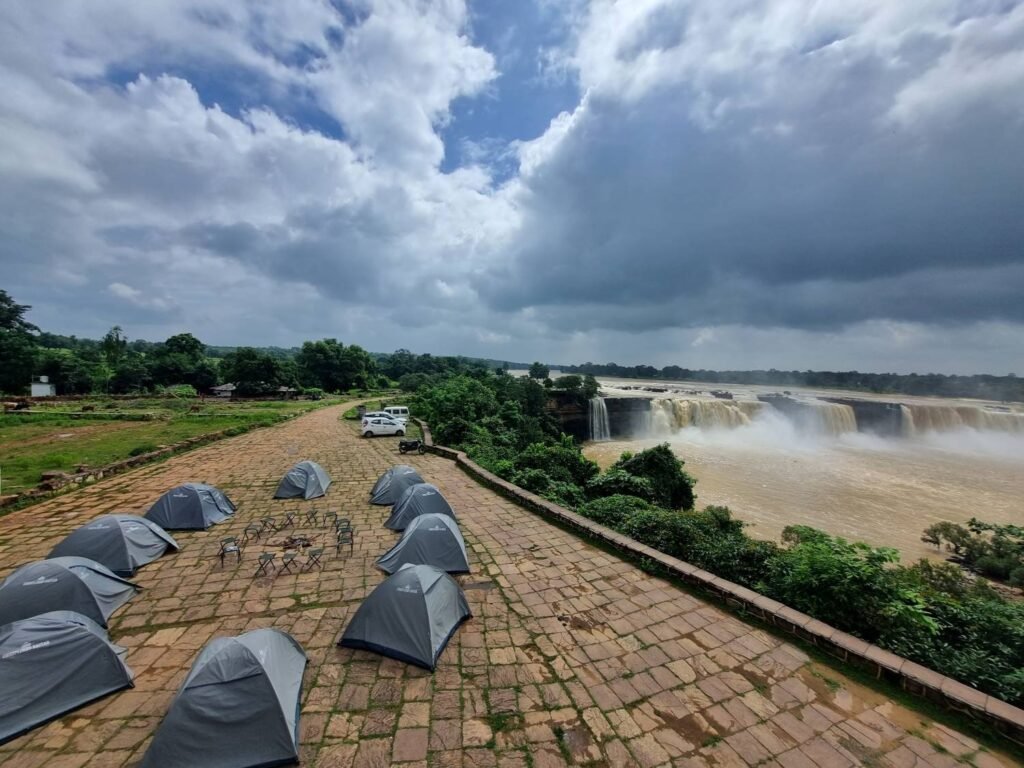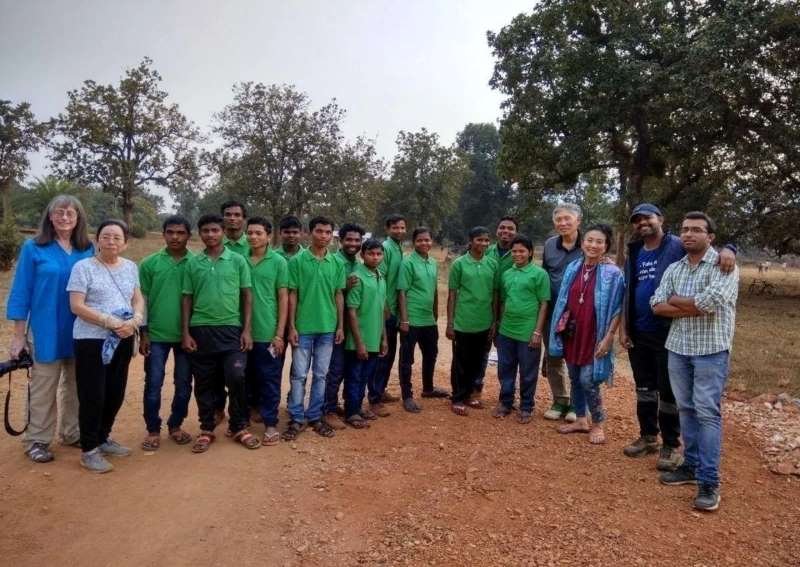Kanger Valley National Park
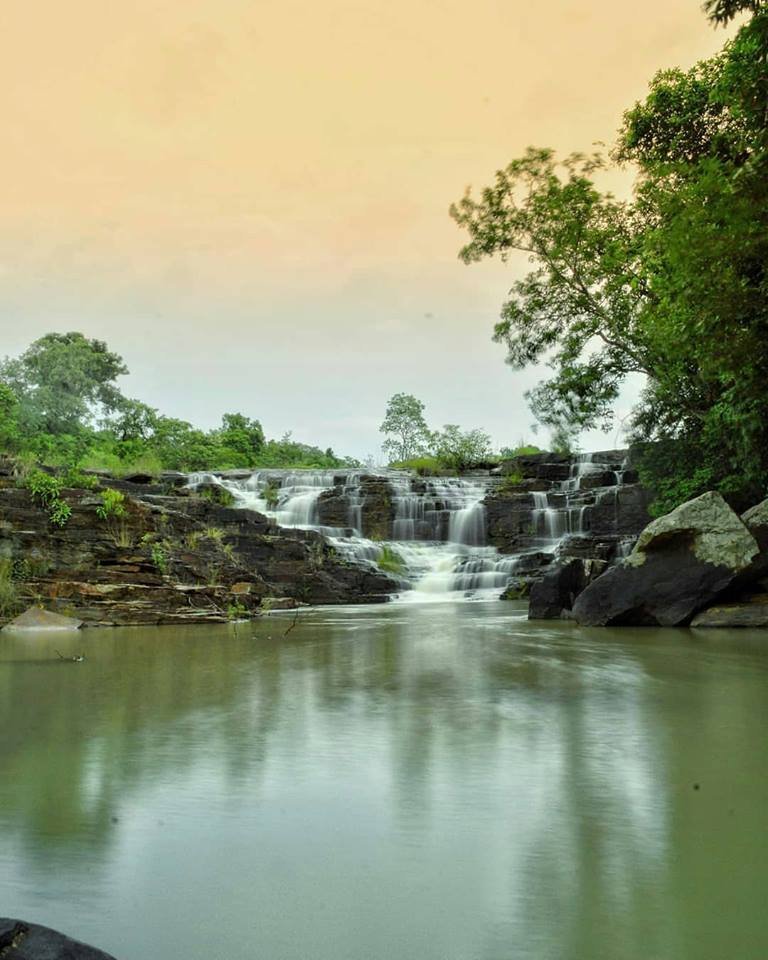
Located amidst the 34 kms long and scenic Kanger valley, a biosphere reserve, Kanger Valley National Park lies at a distance of 27 kms from Jagdalpur. Spread over an area of 200 sq km, the park derives its name from the Kanger River, which flows throughout its length.
Kanger Valley attained the status of a National Park in 1982. Besides wildlife and plants, this national park is home to three exceptional caves—Kutumsar, Kailash and Dandak—famous for the astounding geological formations of stalagmites and stalactites.
FLORA, FAUNA AND WILDLIFE
Prepare to get enchanted by rugged mountain views, deep gorges, dancing trees and seasonal wildflowers, as together they make the perfect environment for varied species of wildlife. Bastar has a fair variety of avifauna, both resident and migratory. Most of the migratory birds visit during winter, to glean the paddy fields after the Kharif crop has been harvested.
As we enter the dense forests, the aroma of the wet leaves and rich soil will fill our senses with euphoria. The Kanger Valley National Park is a distinguished blend of mixed moist deciduous type of forests with a predominance of sal, teak and bamboo. It is the only region in peninsular India with pockets of virgin forests. The park is actually a transition zone where the southern limit of sal forests and the northern limit of teak forests blend. According to the survey done by the Botanical Survey of India and other research organizations, the national park has 553 floral species out of which 12 species are new to Chhattisgarh; 43 species are reported rare. Floral diversity includes in situ gene banks of medicinal plants, grasses, climbers, wild sugarcane, canes, ferns, epiphytes, sal, teak, bamboo and their rich associates.
The Kanger Valley National Park is home to thriving wildlife species like tiger, leopard, mouse deer, wild cat, caracal, bison, chausingha, wolf, chital, sambhar, barking deer, langur, flying squirrel and striped hyena. But the biggest and the most popular species that mesmerizes all with its human voice is the Bastar Myna. The state bird, the Bastar Myna, is a type of Hill Myna (Gracula religiosa Linnacus), and an accomplished mimic, adept at imitating the human voice. For this reason, it has been traditionally prized as a cage bird, resulting in it being hunted to the point of becoming extinct. Today it is an offence to cage this bird. The Bastar Myna is a colourful bird, glossy pitch black with yellow legs, orange and yellow beak, bright yellow wattles on the head and a dash of white on the side wings. It is seen in pairs or noisy flocks in preferred locations in the forests and villages. Both the sexes of the Bastar Myna have dissimilar calls and each bird has a repertoire of 3-13 types of calls.
The forest is home to both migratory and resident birds. Most of the migratory birds visit during winter, to glean the paddy fields after the kharif crop has been harvested. The avifauna here includes the hill myna, spotted owl, red jungle fowl, peacock, parrot, steppe eagle, red spurfowl and partridge among others.
A few tributaries form marshy land in the early dry season due to natural seepage. Ekta Jhodi, Kyam nallah, Karanji Jhodi, Rajamunda, Punji Jhodi, Komkel Jhodi form good marshy areas which are good habitat of wild boar and sloth bear. Chital, barking deer, and panther are mainly found in this marshy area. Kariya Ama nallah is a perennial marshy belt and is ideal habitat for wild boar, sloth bear, chital, leopard and tiger.
NATURE TRAIL
There is a scope for a nice nature trail on the way to Tirathgarh. Lasting for about 1.5kms, this trail holds a wonderful experience for all nature lovers and wildlife enthusiasts. They can study the surroundings, take pictures and learn more about jungle-life as they stroll away deeper into leisure.
GEOLOGY
The national park has remarkable geological diversity. The national park has mainly Cuddapah group of rock formation and at some places Vindhyan group of rock formation, shales are the common rock formation of Cuddapah group, which are horizontally bedded, at many places calcareous, the other rock formation is slate.
In the northwestern part i.e. Tirathgarh, Kamanar, Kotumsar there is an outcrop of limestone, sandstone, quartzite and laterites. In the northern middle part, from Nagalsar to Radhanaras, at many places, limestone is well exposed and outcrops of quartzite and laterites. Limestone caves of Kotumsar, Dandak, Devgiri and Kailash are present in this part. In the northeastern part from Pulcha to Kolab River, rock is shale and some quartzite with outcrops of granite.
In the southwestern part, rock is of vindhyan group mainly granite and sandstone. At a few places granite and mica are also present. In the southern middle part, rock is a cuddapah group of quartzite and granite. At many places mica schist are present. Shale and sandstone are also outcropped. In the southeastern part, rock is primarily a cuddapah group of granite, shale, slate, sandstone and occasional quartzite outcrops. On slopes laterites are present. At some places vindhyan groups of rocks are also present.
Poor and rocky soil is found on the hill tops and slopes. Recent deposits are alluvial soils, high and low level laterites, and ferruginous conglomerates. The soils are yellowish-brown, brownish red, reddish and brown in colour and mostly residual in nature. These soils are loamy, sandy and lateritic in nature. The thickness of soil varies from 4 to 6 feet. The soil is slightly acidic with pH value ranging from 5.3 to 7.0
The park is in the valley of Kanger river. The river flows from NW to SE direction centrally through deep gorges. Both sides of the valley are very steep and are associated with hill ranges. The entire park area is hilly. The eastern half portion is very hilly; the western half portion is comparatively less hilly. There are small plateaus interspersed with hills. The entire park is full of seasonal nallahs and these nallahs join Kanger river from both sides. Major tributaries of Kanger river from north are Durmunda nallah, Champal nallah, Kala Jhodi, Mama Bhancha nallah, Jaraha nallah, Matkal Jhodi, Kodri Bahar nallah, Musari nallah, Karanjr Jhodi, Bade Beda nallah, Dudung Jhodi. Major tributaries joining Kanger from south are Munga Bahar nallah, Ekta Jhodi, Karanjl Jhodi, Raja Munda nallah, Kyam nallah, Punji Jhodi, Kataguda nallah, Komkel Jhodi, Kopang nallah.
The altitude of the park varies from 338 to 781 metres (1,109 to 2,562 ft) above mean sea level. Terrain on northeastern, eastern and southeastern sides is very hilly, steep, high and quite difficult for human intrusion. Kolab River on the eastern border is very rocky with dens and is difficult for human intrusion.
The national park is well-known for the presence of subterranean limestone caves with dripstones and flowstones. The formation of stalactites and stalagmites are still growing. The caves in the national park provide shelter for various species of wildlife. The caves in the national park are inhabited by leopards, porcupines, hyenas, bears, bats, fishes, snakes, frogs, crickets etc. The overhangs are mostly found in the western part (Tirathgarh) and eastern portion (near Kolab River) of the national park which provide a good habitat for honeybees, especially the rock bees. Dens are found on the rocky portions of the National Park where wild dogs (dholes), jackals, wolves, foxes, mongoose, etc. occupy them for shelter and breeding.
Cliffs are present in Tirathgarh waterfall area and in the western portion of the national park along the Kanger River and Kolab River. They provide ideal habitat for bats, eagles, pigeons, swifts and some reptile species. The bouldery drainages can be seen at Tirathgarh waterfall region, Kanger Dhara and at points where the Kanger River flows from steep height.
Sand banks are observed along the Kanger River especially at points where the Kanger River takes a curve. Sandbanks are seen at Bhainsadarha located on the eastern portion of the national park where mugger crocodiles (Crocodylus palustris) use it for basking purposes. Smooth Indian Otters are also found using this habitat.
Kanger River is among one of the very few perennial rivers of Bastar and herein lies the importance of the river and the park. Kanger River is a lifeline and hills are its recharging reservoir; the whole national park is the catchment of Godavari River.


